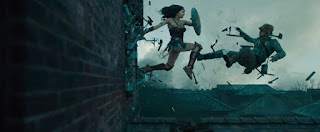Buffalo '66: Twentieth Anniversary
When the name Vincent Gallo comes up in conversation, most immediately recite the details of the director’s heated back-and-forth with lauded critic Roger Ebert. It’s pretty disheartening to think that his directorial career is remembered for this feud - particularly when reflecting on the aftermath of such bickering - but it's certainly what many think of. Ebert damned Gallo’s second-feature as the worst film to play in the history of the Cannes Film Festival, and many argue that this statement killed the filmmaker’s career. Yet, the critic actually liked the version which reached majority audiences, very much in fact. Unfortunately, the damage was done and many had made their minds up, which is such a shame because The Brown Bunny is an outstanding piece of work - misunderstood and important. This view seems to conflict with that of most, but a lot will agree on one thing when regarding Vincent Gallo: Buffalo ‘66, and it is now twenty years old.
Billy Brown (Gallo) has just gotten out of prison. The minute he exits the gates, he is a man out of place, belonging neither outside or inside of the confines he has spent years. As he walks out into freedom, melancholic piano begins to play; normally this would be a moment of triumph, or relief, but instead it is a moment of sadness. Where does he go? This is an irrational man who we realise is a born loser, a man who is coming into the world born anew just as clueless and afraid as he was the first time. He is quickly revealed to be extremely tempered and aggressive, commencing a narrative of comic absurdities. He meets dancer Layla (Christina Ricci) and essentially forces her to accompany him to his parents house to pose as his devoted wife. It’s an odd setup, and it poses as just one of the film’s very unique qualities.
Buffalo ‘66 is a phenomenal film about loneliness. Even when strangers enter your life as hostile and mysterious, they are welcome to unite in shared loneliness - anything for some excitement, anything for a change. It would be easy to assume from Billy’s immediate behaviour that he has been in prison for inflicting violence, but over the course of the narrative so much is revealed about this man who was introduced to us as a beast of a gentleman. He is so strangely sympathetic, and we are able to learn so much about him: we become his captive in some ways, because Gallo’s skilled direction abducts us into the world of the damaged protagonist, and our role is that of Layla. We feel forced to spend time with this awful man, and before we know it we can’t bear to leave him.
His fantasies and vulnerabilities reveal themselves over the course of the day and through a series of avant-garde, stylised flashbacks. The film is radical in its visual style, taking influence from the Nouvelle Vague and also contemporaries of American independent cinema such as Jim Jarmusch and Richard Linklater. It also pays clear homage to the films of Yasujiro Ozu - notably the static camera shots of the family dinner table. It's influences are clear, and Gallo's film still manages to intrigue with surreal bowling-alley tap-dancing sequences to King Crimson, strange bedroom-stage performances, and manipulation of Billy's linearity.
It’s an incredibly funny film, very sad, but also incredibly heartwarming, even life-affirming. What Gallo offers is a stunning character portrait and unconventional love story, brilliantly performed and executed. This is a directorial-debut that stands so strong after twenty years... It spans time, we span time with it.
by Christopher Weston



Comments
Post a Comment